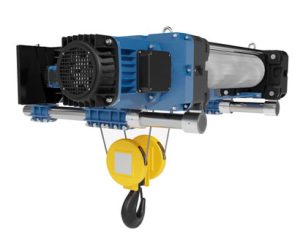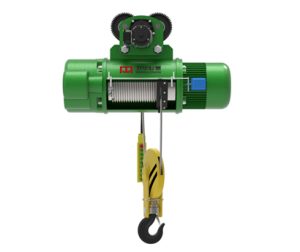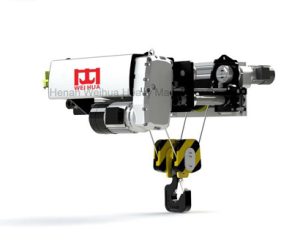
When it comes to lifting heavy loads in workshops, warehouses, фабрике, or construction sites, two workhorses dominate: the Electric Hoist and the EOT (Electric Overhead Travel) Crane. While they both serve the essential function of vertical lifting, they represent fundamentally different solutions. Choosing the right one isn't about which is "better," but which is better suited to your specific needs. Let's break down the key differences.
Удји на цхат
What it is: Essentially a motorized lifting unit. It’s a self-contained device focused solely on hoisting and lowering a load using a chain or wire rope.
Function: Primarily vertical movement. It can be moved horizontally, but only if mounted onto a separate supporting structure.
Mobility: It is not inherently mobile horizontally on its own. You need to mount it onto something like a:
Jib Crane (Wall-Mounted or Freestanding): Provides limited horizontal reach in an arc.
Gantry Crane (Portable or Fixed): Provides travel along a defined path.
Monorail System: Travels along a fixed I-beam track.
Manual Trolley: Requires an operator to push/pull it along a beam.
Motorized Trolley: Provides powered travel along a single beam.
What it is: A complete overhead material handling system. It integrates multiple components:
Bridge: The main horizontal beam(s) that spans the bay width.
End Trucks: Units at each end of the bridge that house the wheels for travel along the runway beams.
Runway Beams: Heavy beams (usually mounted on building columns or a dedicated support structure) that the crane travels along the length of the bay.
Hoist: The actual lifting unit (which is often an Electric Hoist!) mounted on a trolley.
Trolley: The unit that carries the hoist and moves it across the bridge (bay width).
Crane Controls: For operating bridge travel, trolley travel, and hoisting.
Function: Provides full three-dimensional movement within a defined rectangular area (the bay): Up/Down (Hoist), Left/Right across the bay (Trolley Travel), Forward/Back along the bay (Bridge Travel).
Mobility: Has built-in powered horizontal mobility in two perpendicular directions (along the runway and across the bridge).
| Feature | Електрична дизалица | EOT Crane |
| Movement | Primarily Vertical Lifting/Lowering | Full 3D Movement (Up/Down, Across, Along) |
| Complexity | Simpler, Single Unit | Complex System (Bridge, Trolley, Hoist, Runway) |
| Installation | Simpler, Mounts to existing beam/structure | Complex, Requires robust runway support structure |
| Coverage Area | Limited to reach of supporting structure | Covers entire rectangular bay area |
| Capacity | Wide Range (Нпр., 0.25 ton to 50+ тона) | Wide Range (Нпр., 1 ton to 500+ тона) – Typically higher max capacities common |
| Cost | Lower (Unit cost + Simpler Mounting) | Higher (System cost + Structural work) |
| Footprint | Minimal floor space used | Requires clear overhead space; runway beams need support |
| Flexibility | Highly flexible; easily relocated/moved to new mounts | Fixed location; difficult/expensive to move |
| Best Suited For | Localized lifting points, workstations, under jibs/gantries, lower budgets, simpler needs | Bay-wide coverage, high throughput, moving loads significant distances, heavy/awkward loads requiring precise placement |



Remember this key point: The hoist unit on an EOT crane is almost always an Електрична дизалица! The EOT crane provides the comprehensive travel system, while the hoist itself handles the core lifting function. So, it’s not truly “hoist vs crane,” but rather “standalone hoist on a simple support vs. hoist integrated into a complex overhead travel system.”
Don’t get caught in the trap of thinking one is universally superior. The best choice depends entirely on your operational requirements:
Carefully analyze your lifting tasks, coverage area, budget, building structure, and workflow. Understanding the fundamental difference between the standalone lifting unit (Електрична дизалица) and the complete overhead handling system (EOT Crane) is the first step to making the optimal investment for your productivity and safety. Choose wisely!
Ценимо ваше повратне информације! Молимо испуните доњи образац како бисмо прилагодили наше услуге на ваше специфичне потребе.

Core Strengths & Key Features Of Overhead Electric Hoist 1. Robust Construction &a……

The Weihua 1 Ton Electric Chain Hoist with Remote Control combines trusted engineering, ......

Key Features of Weihua Customized Electric Hoist 1. Tailored Design to Fit Application……

A small electric hoist is a versatile and powerful tool designed to lift, lower, and mov……
